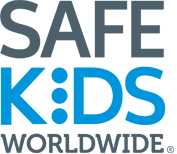LAS VEGAS – With the start of summer quickly approaching, the Department of Transportation’s (DOT) National Highway Traffic Safety Administration (NHTSA) today joined Safe Kids Worldwide and health professionals at Sunrise Children’s Hospital to discuss ways to prevent child deaths and injuries in hot cars. Earlier this month, four young children died of heatstroke in a seven-day stretch across the country, including two tragedies that occurred in school parking lots. NHTSA and other safety advocates urge parents and caregivers to think, “Where’s baby? Look before you lock.”, the primary message in NHTSA’s heatstroke public education campaign.
“Each year, especially during the summer months, we hear reports of the tragic loss of young children as a result of heatstroke in hot vehicles,” said U.S. Transportation Secretary Ray LaHood. “We hope everyone who cares about the safety of our children – parents, grandparents, caregivers and others – will follow the simple, and important, safeguards that can save lives and avoid unnecessary heartache.”
Over the last 15 years, Nevada had ranked among the top 20 states hardest hit by heatstroke fatalities. Since 1998, at least 11 children across Nevada have lost their lives to vehicular heatstroke.
“Child heatstroke in a hot car can happen to any caregiver from any walk of life, even to the most loving and conscientious parents,” said NHTSA Administrator Strickland. “We want to reduce the risk of these preventable deaths and help caregivers avoid accidentally harming a child, as well as address some of the misconceptions about the causes of child heatstroke in cars.”
When outside temperatures are in the low 80s, the temperature inside a vehicle can reach deadly levels in only 10 minutes, even with a window rolled down two inches. Children’s bodies in particular overheat easily, and infants and children under four years old are at the greatest risk for heat-related illness.
Data from the San Francisco State University Department of Geosciences show 32 children died in 2012 due to heatstroke – medically termed “hyperthermia” – and 75 percent of those deaths (24) occurred in the months of June, July and August. An unknown number of children are also injured each year due to heatstroke in hot cars, suffering ailments including permanent brain injury, blindness, and the loss of hearing, among others. Often heatstroke deaths and injuries occur after a child gets into an unlocked vehicle to play unbeknownst to the parent. Other incidents can occur when a parent or caregiver who is not used to transporting a child as part of their daily routine inadvertently forgets a sleeping infant in a rear-facing car seat in the back of the vehicle.
“Losing one child is one too many. That’s why we’re calling on everyone to work together to help protect kids from this very preventable tragedy,” says Kate Carr, president and CEO of Safe Kids. “Whether you are a parent or caregiver, or just a concerned bystander, you can help save lives.”
NHTSA, Safe Kids and its safety partners are urging parents and caregivers to take the following precautions to prevent heatstroke incidents from occurring:
- Never leave a child unattended in a vehicle—even if the windows are partially open or the engine is running and the air conditioning is on;
- Make a habit of looking in the vehicle—front and back—before locking the door and walking away;
- Ask the childcare provider to call if the child does not show up for care as expected;
- Do things that serve as a reminder a child is in the vehicle, such as placing a purse or briefcase in the back seat to ensure no child is accidentally left in the vehicle, writing a note or using a stuffed animal placed in the driver’s view to indicate a child is in the car seat; and,
- Teach children that a vehicle is not a play area and store keys out of a child’s reach.
In addition, NHTSA and Safe Kids urge community members who see a child alone in a hot vehicle to immediately call 911 or the local emergency number. A child in distress due to heat should be removed from the vehicle as quickly as possible and rapidly cooled.
To learn more about NHTSA’s “Where’s baby? Look before you lock.” campaign, visit www.SaferCar.gov/heatstroke.
Safe Kids supports NHTSA’s heatstroke education campaign and the increased national coordination on the issue. In addition, with the support of the GM Foundation, Safe Kids and its network of 600 coalitions and chapters across the nation are helping to educate parents and caregivers through its heatstroke awareness campaign, Never Leave Your Child Alone In a Car.
To learn more about Safe Kids’ “Never Leave Your Child Alone in a Car” campaign, visit www.safekids.org/heatstroke
Media Contact
Jen Pollakusky
Media Manager
[email protected]
202-662-4476
